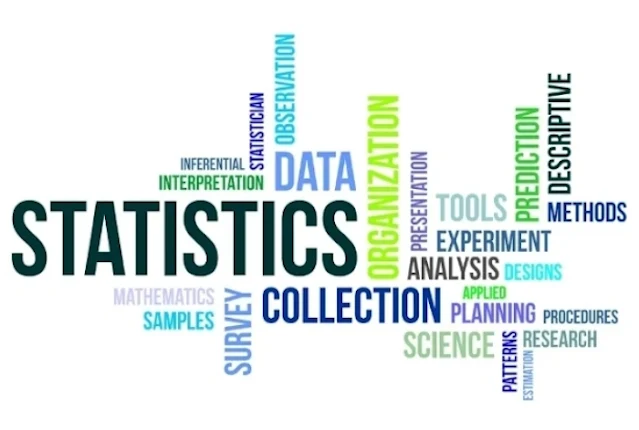Statistics is the collection, compilation, presentation, representation, analysis and interpretation of numeric and non-numeric data for effective decision-making.
Branches of Statistics
There are two branches of Statistics:
- Descriptive statistics
- Inferential statistics
Statistical Data
There are two types and sources of statistical data: primary data and secondary data. Primary data are data obtained first hand (directly from its source through census, surveys or designed experiments). Secondary data are data obtained indirect from published sources such as official registers, annual reports, gazettes, etc.
Data Collection
Collection of data is the first major step in a statistical investigation. Utmost care must be exercised in collecting data because they form the foundation of statistical analysis.
Data Compilation
This is the first step in organizing collected data. This involves carefully editing the data so that omissions, inconsistencies, irrelevant answers and wrong computations in the returns from a survey may be corrected before presentation.
Presentation
After the data have been collected and compiled, they are ready for presentation. We have two major methods of data presentation. They are diagrams and graphs.
Data Analysis
After collection, compilation and presentation, the data is analyzed using simple statistical techniques to a more advanced method.
Interpretation
This is the final stage of statistical research and this leads to decision making. Itt means making conclusions, recommendations from the statistical data.
Application of Statistics in Business Decision-making
In business, numbers are very essential even low numbers make significant difference. Statistics provide facts for effective business decision making. Without statistics, business managers will be taking decisions based on assumption, and decision taken on assumptions, cannot produce effective results.
Statistical analysis helps in the measurement of quantitative relationships between business or economic variables. It is not sufficient to say that one variable is a function or is dependent of the other. For example, it is not enough to say sales is a function of advertisement. There is need to measure if advertisement really affects sales, and to what extent is sales dependent of advertisement. Statistical tool such as regression helps us to be precise.
In this time of big data, statistical tools are used to summarize or condense a mass of data . They help to achieve a clearer understanding of big data. Statistical methods are devices which help to make big data more meaningful. The reality behind the numbers becomes readily understandable.
Business is characterised by uncertainties and risks, statistics therefore, aids in business decision-making as it is method of decision-making, under conditions of uncertainties involving calculable risks when numerical data are available. The use of statistical methods is becoming increasingly relevant in business decision-making, and in deed in every other facet of human endeavor. Proper data analysis enables business owners and managers to make rational decisions based on facts rather than depend on trial and error.
Uses of Statistics in Various Functional Areas of Business Management
Today, the most successful entrepreneurs, managers and decision makers are those who understand and make effective use of statistical information within their possession. The follows are the areas statistics are applied in business decision making:
- Accounting & Finance
- Marketing
- Production
- Personnel
Accounting and Finance
Auditors use statistical sampling procedure when auditing a company's account. For example, assuming the auditors want to determine whether or not the number of sales invoices recorded in a sales book fairly represent the actual amount recorded and received. The number of invoices received is usually so large that reviewing and validating every invoice could be too time-consuming and expensive. In such situation, it is common practice for the audit staff to select part of the invoices called sample. After investigating the accuracy of the sampled invoices , the auditor draws conclusion as to whether or not the invoices presented are acceptable . These are some of the uses of statistics in this area:
- To design accounting and auditing procedures which minimize the sum of the cost of the procedure and error.
- Developing sampling procedures for accounting to provide information for required accuracy more quickly.
- Determining long-range capital requirement and how to generate these requirements.
- To determine what mix of age and skill among workers is most suitable
- To determine what causes accidents in the factory and how they can be prevented
- To determine what causes absenteeism and labour turnover and how these can be minimized
- To establish ways of recruiting personnel, effectively classify them, assigning jobs to them, and measuring their performances in their jobs.
Important Statistical Tools for Business Decision-making
1. Measures of central tendencies/measures of average — Mean, mode and median
2. Regression
3. Correlation
4. Time series and forecasting
